- Home
- Orhan Pamuk
The Innocence of Memories Page 5
The Innocence of Memories Read online
Page 5
My search for the place where Füsun and her family would live, which began before I even started writing the novel, also took me to some of the city’s more traditional neighbourhoods. These were often situated near Sultanahmet and Süleymaniye, places full of wandering tourists. They seemed rather shabby and poor to me at the time, though they’ve become wealthier now. When I walked around Fatih, I thought that someone like Kemal wouldn’t really come to a place like that every night. I did a lot of exploring in that summer of 1999, both before and after the earthquake. The Fatih Hotel is a significant location in Grant’s film, and it is permeated with the atmosphere that reigns in these kinds of neighbourhoods. In the end I bought a building I liked in a neighbourhood where I’d lived and roamed for years. I was sure they would never sell it. Then one day I heard it announced: ‘That one’s up for sale too.’ I used to pass by it all the time. Every day between 1996 and 2000, I walked my daughter to school past the same building that now houses the Museum of Innocence. I would drop her off and walk back the twenty minutes to my studio, where I would work on my novel. I would see this handsome old building on the way, though back then it was in a state of disrepair. It was a deprived neighbourhood. People would leave their rubbish outside their front doors. Still, the style, size, and location of the building seemed ideal. I thought it would be perfect as the place where my heroine Füsun would live and where a rich boy from Nişantaşı would come in his car to visit her.
Later, I entered the building for the first time.
THE CHANGING STREET
The Museum of Innocence has benefited from the gentrification of the Cihangir, Çukurcuma, and Tophane area – but it has also suffered. There is too much money now, and too much shine. The old texture has dissolved. Of course, the museum itself has also influenced the neighbourhood. Anyone who sets up a museum knows that the area around it will be somehow transformed, that the museum will draw more people in and bring wealth to the neighbourhood. I was aware these things would happen. But in parallel to this, the city as a whole has changed enormously over the past fifteen years. The novel The Museum of Innocence catches the city on the cusp of this change. The transformation and growing wealth of Istanbul in the past fifteen years outstrips what happened in the preceding fifty years. I spent the first fifty years of my life thinking, ‘This city will never change, we will always be a poor place on the edge of Europe, among the ruins of the Ottoman Empire.’ But in the fifteen years from when I bought the museum building up to 2014, Turkey has experienced a vast economic transformation. My museum came into being in the midst of all this, and the neighbourhood has since changed beyond what I could have ever predicted. Sometimes I regret this, sometimes I don’t. Either way, I accept it as a part of life.
THE TRANSFORMATION OF ISTANBUL
There are so many facets to the changes in the city. When I was a boy, I used to welcome the demolition of old buildings. I was ready to embrace anything that was new, and a modern, freshly built apartment block made of concrete and glass seemed to me cleaner, more European, and inherently interesting. Like everyone else, I thought it was a good thing for those unvarnished, malodorous, musty old wooden buildings to be brought down. These attitudes started to shift in the sixties and seventies, at a time when the rich were mercilessly destroying the last few remaining wooden mansions, arranging perhaps for their caretakers or contractors to deliberately set them on fire so as to clear the way for new multi-storey blocks, and thus profit from their land. ‘Look at these mercenaries,’ we soon began to say, ‘willing to set their own homes on fire to build apartment blocks in their place …’ Eventually the law changed to say that if something burned down, it had to be built back up the way it was before. But by then much of the city’s glorious character had already been lost. As I write in Istanbul, all those wooden buildings dating back to the late Ottoman era, the soul and architectural essence of the city, were demolished, burned down, and destroyed before my eyes. Only when they realised how little was left did they finally decide to start looking after it. My whole life is the story of the demolition, the arson, the mutilation, and the transformation of Istanbul. It is also the harrowing story of the destruction of our memories, of the streets that mean something to us, of our surroundings and of sights engrained in our minds. It doesn’t always have to be miserable, but it’s certainly never happy. It goes beyond good and bad; when your city changes, your identity, your memory, your recollections change with it.
Let me put it simply: you’re walking in Istanbul, and on your way down a hill you see a view of the Bosphorus. You happen to be in love, like Kemal. That view will forever be associated with your love and heartache. Five years later, your feelings may have changed, but you may find yourself back on that hill, and there’s that view again. The moment you see it, you will recall the anguish you felt the last time you passed this place. But it can be any feeling, really: it can be simple jealousy, or an extravagance of success, or plain joy; perhaps you’d just finished school, just sat the hardest exam, just graduated. It can be happiness that the city and its views remind you of; it can be anything.
ARISTOTLE AND TIME
In the novel and museum, I develop a simple, perhaps childish little theory of memory. We are all familiar with Aristotle’s thinking on atoms. We now know that the particle we call the atom is the smallest indivisible unit that forms any object. According to Aristotle, ‘moments’ are like atoms: they cannot be split into smaller parts. The line that joins moments together is Time. This simple Aristotelian logic underpins the philosophy of the Museum of Innocence. Every object we see in the museum corresponds to a moment in the story of Kemal and Füsun. The straight or zigzagging line that joins those moments is the story – a story with curves, plateaus, and gentle slopes. The Museum of Innocence shows us a new way to see objects, and suggests that we look at the objects in our own lives as triggers for old memories, tools with which to retrieve the past we have lost. By arranging objects in a particular way, we can display an entire life – or even just one part of it, like Füsun and Kemal’s love – in a museum.
Thus every moment comes with corresponding objects, and similarly, certain buildings in the city correlate to important times in our lives. When a building is destroyed – an iconic post office from the 1910s, perhaps, or a century-old mansion that had once belonged to this or that general, or the cinema where you saw hundreds of films in the 1950s – we don’t just lose a pretty building or a potential tourist attraction, but also find that a road leading back to our memories has suddenly been barred. This is particularly true for those who live in the city. Outside visitors are less affected. They might say, ‘Wouldn’t it be nice if there were some older buildings left?’ And we will say, ‘Yes, it would be nice, but it would be even better if we could find a way back to our memories.’ When an old building is demolished, when a view that means something to us is blocked, when a familiar element – even an ugly one – of the city’s landscape disappears, the routes that lead back to our memories are cut off, and our sense of identity is corroded. So we embrace every part of the city – ugly or beautiful – that is old, its buildings, its views, its walls, as a way of embracing our identity. Our purpose is not to protect the city; what we’re concerned with is the preservation of our memories and of our sense of self.
PROUST AND CONSCIOUS REMEMBRANCE
When the book was published and the museum opened, the nature of the novel and the museum’s effect on visitors were often described as ‘Proustian’. But I took this Proustian inspiration in a slightly different direction from what is usually understood by the term. The story Proust tells through the madeleine is of an unconscious remembrance. His hero eats a cake without even thinking about what he is eating, and begins to remember without even realising that he is. It is not a conscious effort. In The Museum of Innocence, Kemal recalls the past like someone who has read Proust. In other words, he picks up the cake in order to remember. He places Füsun’s earring in a display cabinet in order to
remember. He retrieves the cigarettes smoked by the girl he’s just had dinner with in order to remember that moment later, and he annotates each cigarette with the specific moment it corresponds to. Proust’s hero doesn’t purposely set out to remember. With Proust, memories are involuntary. But for Kemal, memory is voluntary; he plans to remember. In the Museum of Innocence, even the present is something to live through so that it can be savoured in future as a memory, and memories of past happiness help to alleviate present sorrows. At home, Kemal turns to those stolen cigarette butts for solace. When he loses Füsun forever, Kemal soothes his heartbreak and grief with views of Istanbul. The landmarks and landscapes of a city don’t just bring back memories, they can also amplify, or alleviate, or redirect our joy and our despair. I wanted the Museum of Innocence to demonstrate how objects can be used to mitigate life’s difficulties and come to terms with our memories, with forgetting, and with sorrow. And I wanted to show that creating a museum is in equal parts a political act – a form of cultural politics aimed at preserving our memories – and an act of private resistance, a bulwark against the vagaries of time, protecting our identity and dignity as individuals.
LIFE–HAPPINESS: THE FIRST AND LAST SENTENCES
The Museum of Innocence begins with a sentence that includes the words ‘life’ and ‘happiness’, and ends with a sentence that again includes the words ‘life’ and ‘happiness’. The first sentence says: ‘It was the happiest moment of my life, though I didn’t know it,’ and the last says: ‘Let everyone know, I lived a very happy life.’ This last sentence is also a reference to the ending of Flaubert’s novel Sentimental Education, which contains a similar line about ‘the happiest moment of our lives’.
We see and feel and experience so much when reading a novel. But novels can also subtly show us which things in life matter and which do not, what to value, which nuances to register. The ability to do this is, I think, what makes a novelist a novelist. Some writers focus on things I don’t care much about, like war and money. Others instead touch on themes that are closer to my heart, and write about these as fundamental values. They are the emotions and concepts I consider fundamental in life: affection, romantic love, loneliness, fear, death, brotherhood, family, friendship. And they are the same themes that run through The Museum of Innocence. A novel must necessarily deal with the meaning of life and with the notion of happiness, so I deliberately started and concluded The Museum of Innocence with these two subjects: life and happiness. Kemal may come across as the quintessential Turkish man, self-indulgent, excessively sure of the authority conferred on him by his upper-middle-class background, and selfish. He may not seem, initially, the most sympathetic of characters. But his loyalty to Füsun and the heartache he suffers soon make us grow fond of him. Or perhaps that’s just how I see it …
Told through Kemal’s worldview, though never fully overlapping with his perspective, The Museum of Innocence shows us what matters in life. The root causes of Kemal’s unhappiness may be his exile from his friends and family, his lofty ideas about himself, his pride, his arrogance. The novel also hints at how Kemal’s love affair is partly shaped by notions of pride, dominance, the rejection of male authority, a thwarted possessive impulse, and self-doubt – or at least these were some of the things I thought about when writing the book. But fundamentally, novels are made of the values they emphasise for the world they have created, and those values were on my mind when I wrote that first sentence – ‘It was the happiest moment of my life, though I didn’t know it’ – and when I closed the novel with another sentence on life and happiness.
The older I get, the more I value family, happiness, and life. Perhaps I am also moving on from the experimental style and the political and East–West themes of my earlier novels. I don’t think anyone will mind this shift. I changed the form of The Museum of Innocence while I was still writing it. When I first started, I planned to structure it as an annotated museum catalogue. There wouldn’t be any illustrations in this catalogue, but I had in mind a list of items: first, a paragraph on Füsun’s earring; second, the apple she ate one time, and a description of her expression as she ate it; and so on. All the objects were going to be listed in this way, each with its own description, and these descriptions would be arranged and organised in such a way that the novel would turn out like a carefully constructed and richly annotated museum catalogue or guidebook.
Eventually I gave up on this plan. I was already building a museum anyway. I was already being sufficiently experimental, modern, postmodern, whatever you want to call it. I thought it would be redundant to write a novel in the style of a catalogue, so at the last moment I turned it into something like a classical nineteenth-century novel.
COLLECTING OBJECTS
I started collecting for the museum while I was still writing the novel. I was lucky: Çukurcuma’s junk shops were all clustered about half a kilometre from where the museum is now situated. That same area is now full of antiques stores and vintage shops, but back then it was a place where penniless students could come to buy second-hand trousers, mattresses, writing desks, and shoes. A few of those old shops persist to this day, humble, dust-ridden establishments where the difference between the buying and selling price of each article is minimal. Horse-drawn carts still roll up loaded with used items – all sold off within minutes. All the shops in that part of Çukurcuma used to be like that twenty years ago, before the expensive antiques stores took over. I used to buy everything there. I used to walk down those same streets every day after dropping my daughter off at school and on my way to my studio to work on Snow, The Museum of Innocence, My Name Is Red. I knew the area well, and everything that could be bought there. Traders would call out to me: ‘Mr Pamuk, we’ve got some new stock in, come and see.’ That’s how I started my collection. One thing I’ve noticed, in both antiques stores and junk shops: the things that end up there are only a minuscule fraction of the objects we use in our daily lives. No-one sells their old toothbrush to a second-hand store. No-one even keeps their old toothbrush. So many of the things that we use in life, and that are important to us, end up in the trash.
But there are a number of objects that fall into the category termed in the West as ‘collectibles’: matchboxes, lighters, bus passes, tickets to football matches, and, most importantly, anything to do with old films. Modernisation outside the Western world, in Istanbul as in all developing countries, has brought with it a mania for collectibles, but with a particular focus on cinema. I’ve seen this happen all over the world. Anything to do with cinema – old movie magazines, so-called lobby cards, film reels, actor portraits, film studio ephemera, movie-star stickers from chewing-gum packets – was inherently of interest to the local collectors that began to emerge with the modernisation of the non-Western world. Füsun’s dream of becoming a film star, of breaking into Yeşilçam – Turkey’s answer to Hollywood and Bollywood – is a parallel for that modernisation and the accompanying passion for film memorabilia that moved the collectors who first emerged in the early years of the Turkish Republic.
Yeşilçam happens to be fairly close to the Çukurcuma area. That is a coincidence. You can’t always have everything planned while writing a novel, but things do sometimes align by chance.
The quince grater from The Museum of Innocence is a good example of how objects can be used to tell a story.
I wanted to write about the military coup of 1980 through objects, but I couldn’t seem to find a way to do it. As the people of Istanbul will often reminisce, military coups back then meant a ten o’clock curfew – though soon enough, the rules would be relaxed, and the curfew extended to eleven, and later to midnight … Towards ten o’clock, the police would start to limit access to key areas of the city, like Taksim, Beyoğlu, Şişli, and Karaköy. As curfew approached, people would grow increasingly anxious to get home, drive recklessly, and crash their cars – which is exactly the kind of anecdote I love to recall and write about. The police were always pulling people over to sear
ch their cars, and though nobody dared carry firearms at a time of martial law, any old thing that looked remotely sharp – knives, cutters, switchblades, and even a harmless yet unfamiliar and therefore suspicious object like a quince grater – could be considered a weapon. Thus the quince grater became a means through which I could write about the car searches and curfews at the close of the year 1980.
Using objects to explore the world in which they belong is at the heart of both novels and museums. While I was assembling my collection, I would often receive helpful suggestions from relatives and friends, or from junk dealers in Çukurcuma telling me, ‘Mr Pamuk, we’ve got something new that might interest you, would you like to take a look?’ Even after the novel was published, and as I worked to finish the museum, I continued to collect postcards, paintings, old photographs, and movie stills.

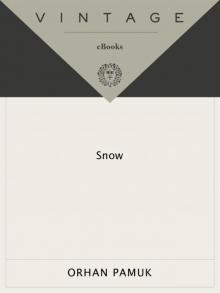 Snow
Snow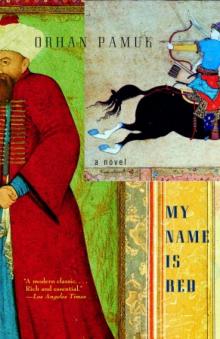 My Name is Red
My Name is Red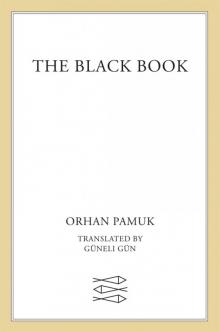 The Black Book
The Black Book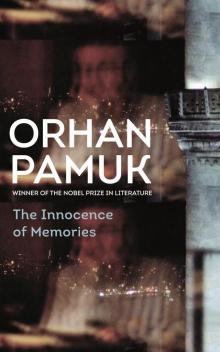 The Innocence of Memories
The Innocence of Memories The White Castle
The White Castle Other Colors
Other Colors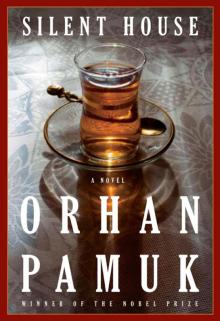 Silent House
Silent House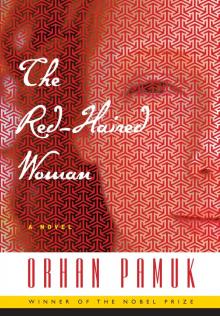 The Red-Haired Woman
The Red-Haired Woman The Museum of Innocence
The Museum of Innocence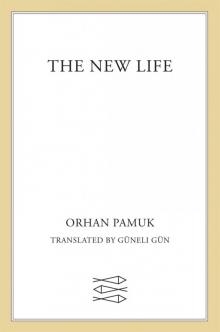 The New Life
The New Life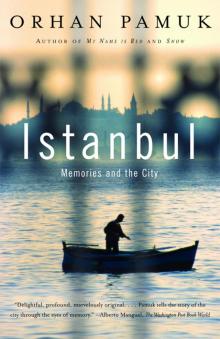 Istanbul
Istanbul